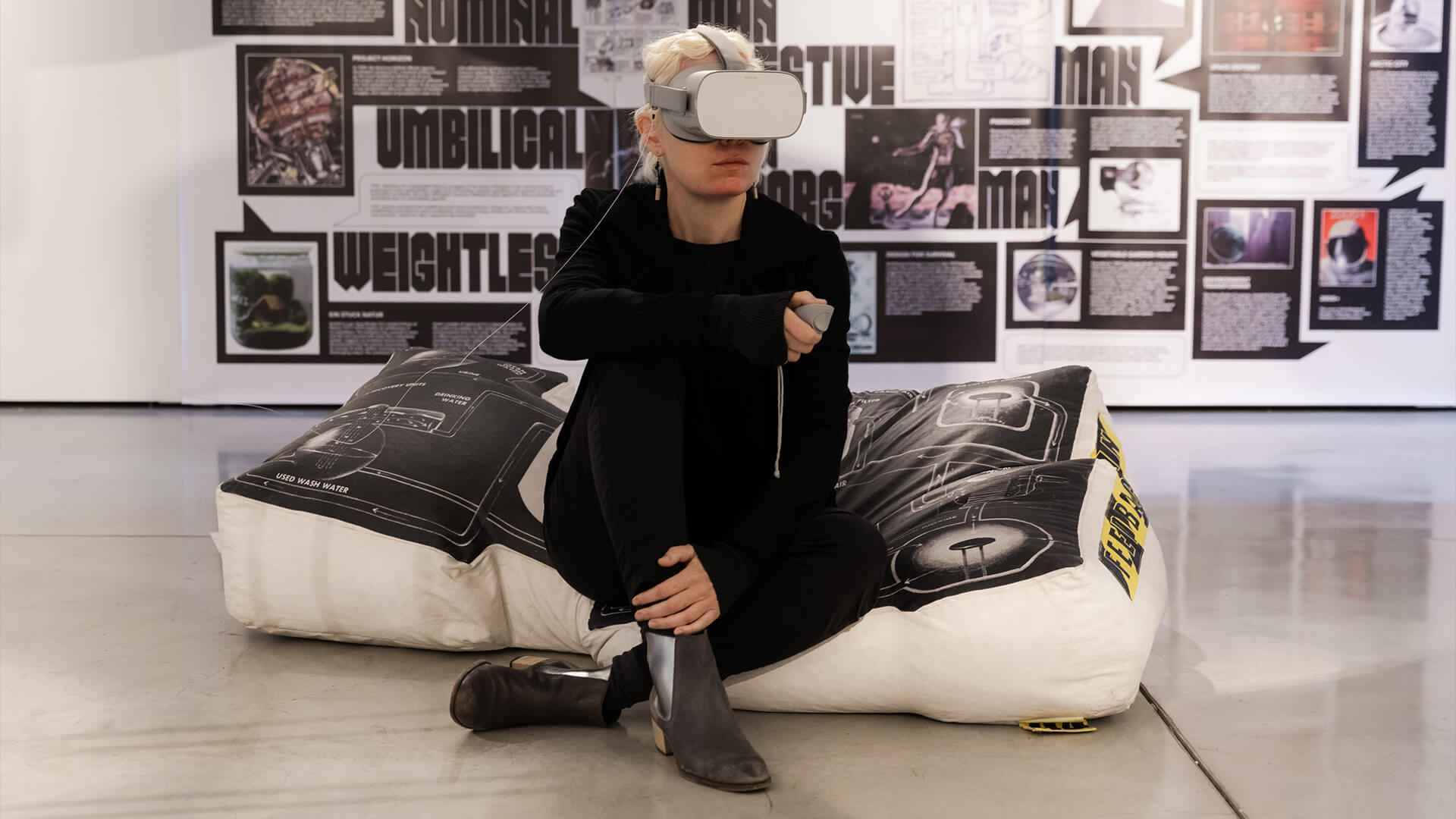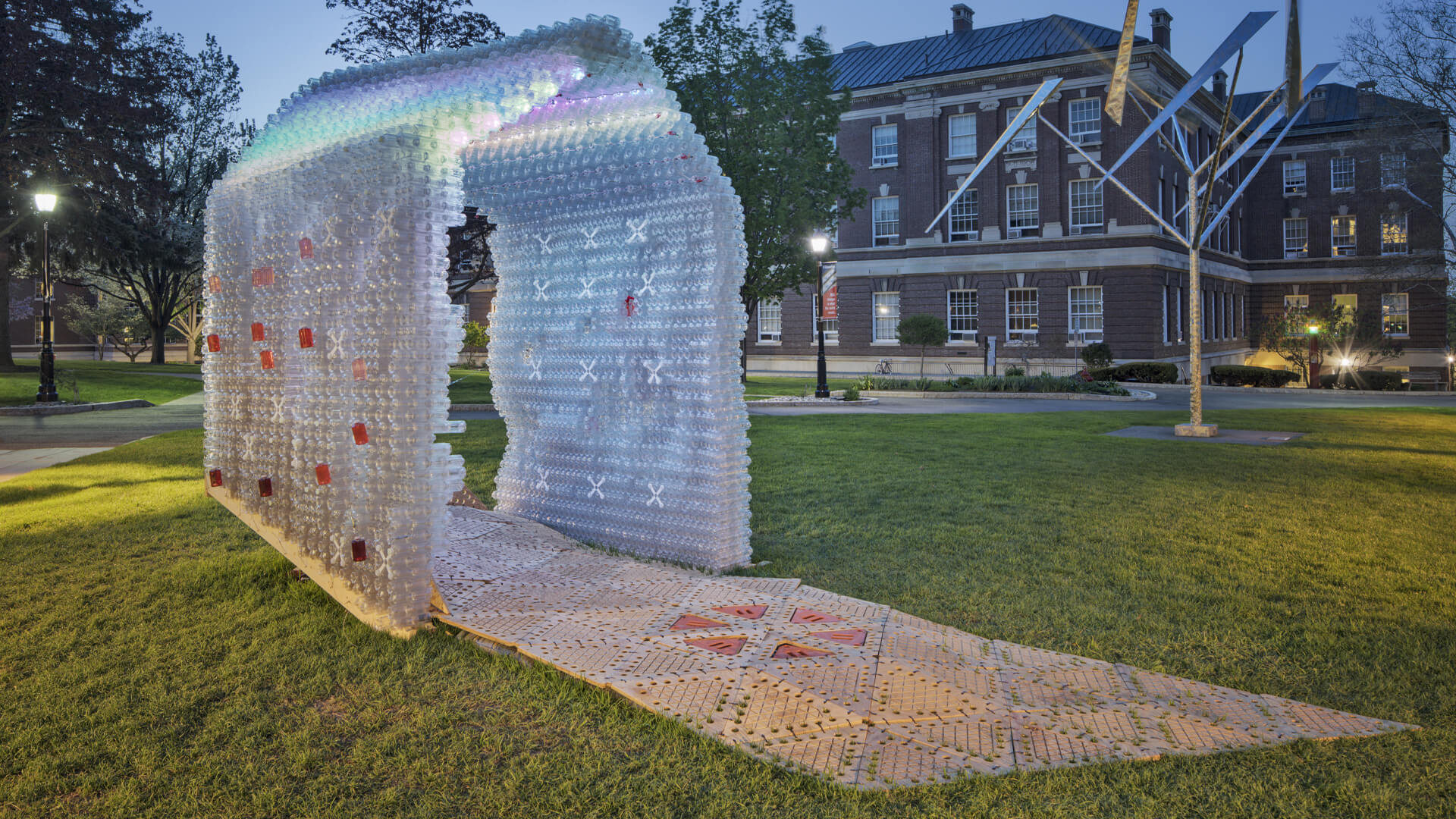For Lydia Kallipoliti, research and design are indivisible and intertwining. Her thinktank, ANA cycle reframes contemporary discussions on global warming, recycling, and sustainability by demonstrating the roots of current thought in experimental positions in the context of natural history, environmental science and visual culture in the twentieth century. We caught up with this leading architect, engineer, scholar and curator to see what made her and her experimental studio Best of BUILD.
The nature of Lydia Kallipoliti’s work is drenched in understanding the history, research and practice of architecture, technology and environmental politics, resulting in several exciting projects, experimental design installations and publications.
To start, we asked Lydia about how she was able to combine her academic approach with practical matters of design and construction. “I would argue that my work is an activist type of scholarship as a tool of engagement with current environmental debates,” she explained. “Trained as a theorist, but also as an engineer with experience in building materials and systems, the nature of my work is inherently interdisciplinary.” Philosophical and theoretical questions feed every project, with different types of mediums and methodologies -ranging from archival surveys to technical reports- entering the visualization of data and the ways in which research is inhabited as a living archive.
With a focus on the changing ways in which we perceive climate change, we asked Lydia how her work contributes to a long legacy of research on environmental design. “My broader intention is to place current theories of environmental design and planning into an enlarged theoretical, historical and cultural context. I am invested in the relevance of history to vital questions that surface as novel in contemporary practice and in the long-standing change of the architect’s identity as a key agent of social policy.” Lydia’s work not only examines history as a collection of facts to broaden our understanding of the present, but also delves into a critical understanding of temporality. She sees time as “an immersive space where existential ideas about world orders migrate though different architectural and spatial typologies.”

As a thinktank with the ability to explore concepts physically in the format of experimental installations, Lydia sees the line between her research and practice as a redundant dichotomy. There are three principles, nevertheless, that run through various aspects of her work. “First, I approach questions of diversity through the lens of energy generation and distribution; the ways in which decentralizing the supply of energy could transform environments and power relations,” she explains. “Throughout a number of pedagogical initiatives, experimental art projects and exhibitions, I have been exploring new forms of urbanization and collectives enabled from localized federated networks of energy production.”
Secondly, an interest in “animating” archival material has led to its own series of ventures in projects like EcoRedux, Air Shake, Guinea Pigs and Autonomy & Autodigestion. “I conceptualize the line between reality and fiction, between past and present as an optical illusion,” she tells us. “The scope, in this series of projects, is to redesign and re-imagine an archive of historical material as a space that can be designed; either as a hologram, virtual reality animation, a series of social media initiatives or other platforms, with the aim to engage a wider audience and produce mediums for an ‘immersive scholarship’.”
Finally, ANA cycle is committed to recycling not only as a practical and ethical imperative against consumerist culture, but also as an ideational position: concepts emerge as allegedly new, though ideas undergo long journeys of migration from one epistemological field to another. On the ground, Lydia’s long-standing interest in recycling has led to several material experiments, theories of waste and reuse, as well as closed and self-reliant systems. “In studying waste streams, I am interested in how future market ‘bubbles’ are prognosticated to rise from the trading of urban waste. Congested metropolitan environments like New York produce massive amounts of solid waste and sewage that is then transported out of the city. The purging of this waste is invisible to our perception, yet it generates capital for those who manage and transfer the raw materials. Waste is a phantom material condition, but at the same time it is a product, or better stated a by-product, of social reality.”
With a sustained presence in international exhibition and research venues, as well as several awards and reviews of recognition, the future of ANA cycle looks bright indeed. With a continual stream of deeply investigative projects under her belt, there can be no doubt that Kallipoliti’s work has made a significant impact in the way that we conceptualize research and design.































